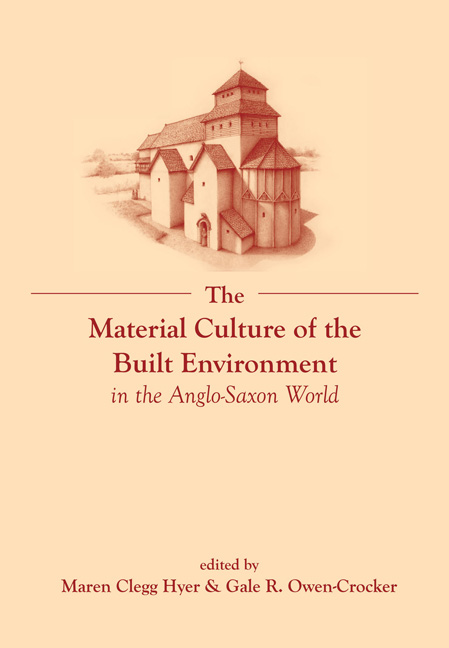Book contents
- Frontmatter
- Dedication
- Contents
- List of Figures
- List of Tables
- List of Contributors
- Introduction
- 1 Enta geweorc: The Ruin and its Contexts Reconsidered
- 2 Roads and Tracks in Anglo-Saxon England
- 3 Domestic Dwellings, Workshops and Working Buildings
- 4 Place and Power: Meetings between Kings in Early Anglo-Saxon England
- 5 The Cuckoo and the Magpie: The Building Culture of the Anglo-Saxon Church
- 6 Landmarks of Faith: Crosses and other Free-standing Stones
- 7 Landmarks of the Dead: Exploring Anglo-Saxon Mortuary Geographies
- 8 Boundaries and Walls
- 9 The Landscape of Late Saxon Burhs and the Politics of Urban Foundation
- 10 Signalling Intent: Beacons, Lookouts and Military Communications
- Notes
- Suggested Reading
- Index
6 - Landmarks of Faith: Crosses and other Free-standing Stones
- Frontmatter
- Dedication
- Contents
- List of Figures
- List of Tables
- List of Contributors
- Introduction
- 1 Enta geweorc: The Ruin and its Contexts Reconsidered
- 2 Roads and Tracks in Anglo-Saxon England
- 3 Domestic Dwellings, Workshops and Working Buildings
- 4 Place and Power: Meetings between Kings in Early Anglo-Saxon England
- 5 The Cuckoo and the Magpie: The Building Culture of the Anglo-Saxon Church
- 6 Landmarks of Faith: Crosses and other Free-standing Stones
- 7 Landmarks of the Dead: Exploring Anglo-Saxon Mortuary Geographies
- 8 Boundaries and Walls
- 9 The Landscape of Late Saxon Burhs and the Politics of Urban Foundation
- 10 Signalling Intent: Beacons, Lookouts and Military Communications
- Notes
- Suggested Reading
- Index
Summary
Nu ic te hate, haled min se leofa
tat du tas gesyhde secge mannum,
onwreoh wordum tat hit is wuldres beam,
se de almihtig god on trowode
for mancynnes manegum synnum
and Adomes ealdgewyrhtum.
Now I command you, beloved man, that you tell people about this sight, reveal in words that it is the tree of glory on which Almighty God suffered for the many sins of mankind and Adam's ancient deeds.
Introduction
Free-standing sculptures are, apart from buildings and the rather surprising case of the Bayeux Tapestry, the largest artefacts to have come down to us from the pre-Conquest period in England. They range in size from (for example) the Ruthwell cross at more than 518 centimetres (17 ft) in height, to small grave markers complete at less than 30.5 centimetres (1 ft). They come also in a variety of forms, some recognisable as cross shafts and heads, occasionally as steles, as bases of other monuments or as grave markers of a considerable variety of forms, and with a range of decoration both figural and aniconic, with or without inscriptions, which can be dated by comparison with decoration in other media, or, in the case of inscriptions, with changing styles of lettering or linguistic forms. With the doubtful exception of some of the smallest grave slabs, which may have been buried below the surface in the grave, all these monuments were meant to be seen, whether placed inside churches, in the precincts around a church or an ecclesiastical community or in the wider landscape. What these sculptures meant to those who commissioned and made them, or to the contemporary viewer, has been a preoccupation of serious scholars of this material since the nineteenth century. Indeed, W.O. Stevens, in 1904, though now out-of-date in many ways, listed most of the categories of possible function still of interest today – titling them memorial, mortuary, boundary, sanctuary, standard and oratory crosses – and many of the relevant contemporary sources. Nevertheless, this interest has increased and become more speculative since the 1990s: Rosemary Cramp has summed up both past concerns and more recent trends in a historiographical analysis which also provides a useful, though still only partial, bibliography to the topic.
- Type
- Chapter
- Information
- Publisher: Liverpool University PressPrint publication year: 2015



